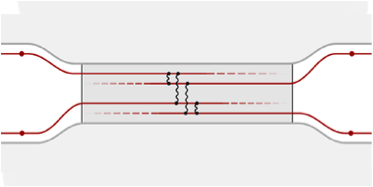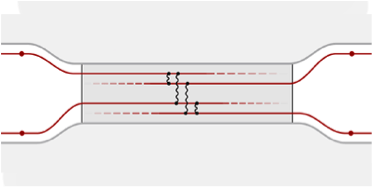Half In, Half Out
In one-dimensional solids, strong Coulomb interactions can make the low-lying excitations look nothing like normal electrons. In this so-called Luttinger liquid, which has been observed in nanotubes, quantum wires, and the edges of quantum Hall systems, the spin and charge of electrons propagate independently and the concept of a Fermi surface, with well-defined electronic states, breaks down. Now, writing in Physical Review Letters, Alexander Altland from the University of Cologne, Germany, and his colleagues present calculations that challenge the usual way of thinking about the effects of impurities on the conductivity of Luttinger liquids.
In a 1992 seminal paper, Kane and Fisher predicted that even a weakly scattering impurity would block a current in a Luttinger liquid; that is, the Luttinger liquid would become an insulator. At finite temperatures, the conductance would follow a power law with an exponent that is a measure of the interaction strength of the Luttinger liquid.
Kane and Fisher’s analysis assumed currents were coherently scattered from the impurity; Altland et al. have extended the earlier model to the case of a Luttinger liquid with an impurity that permits both coherent and incoherent scattering. In this picture, Altland et al. find that carriers are transmitted or reflected with equal probability, a finding that is robust and insensitive to the details of the impurity or coupling to the leads. Their results could be tested by measuring the edge states in a fractional quantum Hall system. – Sarma Kancharla





